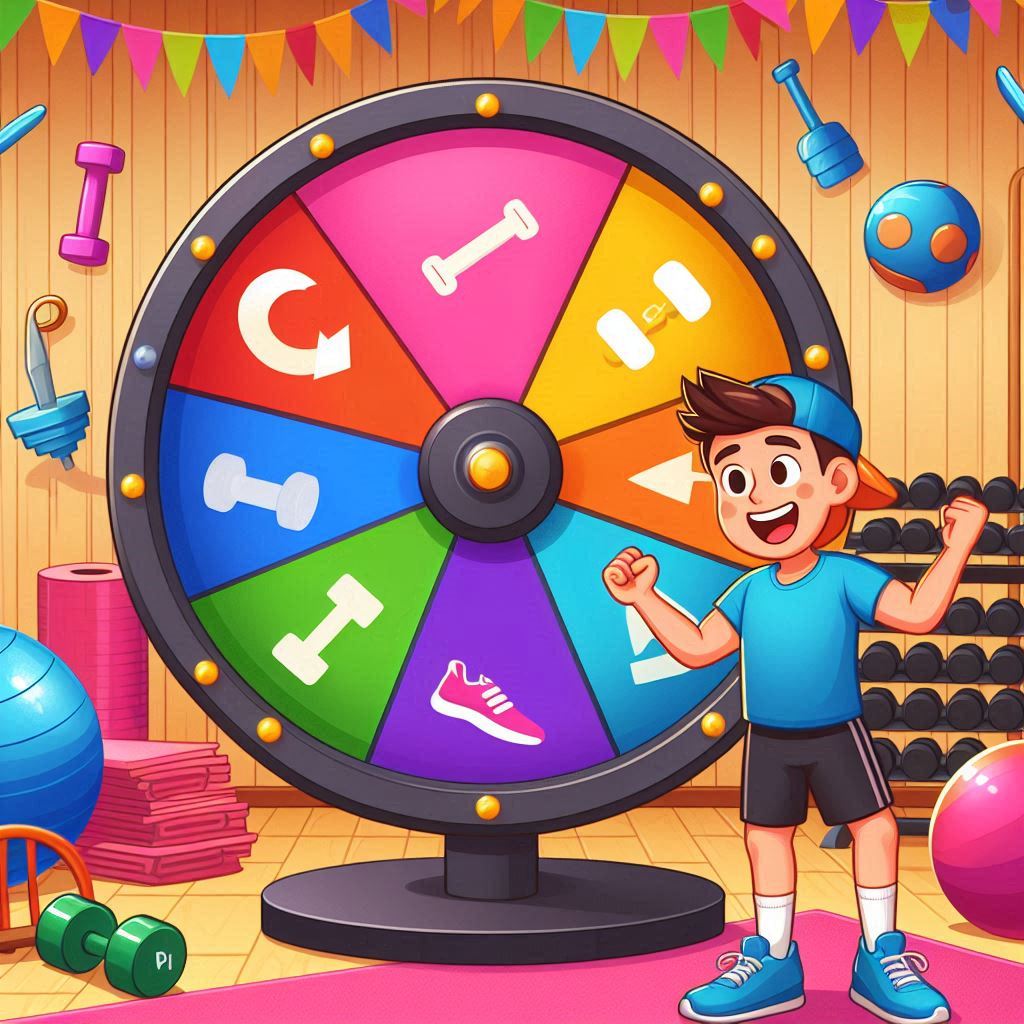Gamify Your Workouts: The Power of Random Exercise Selection

Gamification has revolutionized the fitness industry, transforming mundane exercise routines into exciting, engaging experiences that people actually look forward to. The concept of random exercise selection through spinning wheels represents one of the most effective applications of gamification in fitness. This innovative approach combines the thrill of chance with the science of exercise, creating a powerful tool for motivation, consistency, and long-term fitness success. By turning workouts into games, we can overcome the psychological barriers that often prevent people from maintaining regular exercise habits.
The Psychology of Gamification in Fitness
Understanding why gamification works in fitness requires exploring the fundamental psychological principles that drive human behavior. The human brain is naturally drawn to games and challenges, and when we apply these elements to fitness, we tap into powerful motivational forces. Random exercise selection through spinning wheels leverages several key psychological principles:
- Uncertainty and Anticipation: The element of surprise creates excitement and maintains engagement
- Immediate Feedback: Instant results and visual feedback reinforce positive behaviors
- Progress Tracking: Visible progress markers provide a sense of achievement
- Social Connection: Shared experiences create community and accountability
- Mastery and Competence: Learning new exercises builds confidence and self-efficacy
- Autonomy and Choice: The illusion of choice while maintaining structure
The Science Behind Random Exercise Selection
Random exercise selection isn't just about making workouts more fun—it's grounded in solid exercise science. Research has shown that varied training stimuli lead to better fitness outcomes than repetitive routines. The spinning wheel approach ensures comprehensive training by:
- Preventing Adaptation: Constant variation prevents the body from plateauing
- Balancing Training: Ensures all fitness components receive attention
- Reducing Injury Risk: Varies movement patterns to prevent overuse
- Enhancing Motivation: Novelty maintains interest and engagement
- Improving Results: Diverse stimuli lead to better overall fitness
- Supporting Recovery: Allows for natural variation in intensity
Key Elements of Effective Fitness Gamification
Successful gamification in fitness requires careful attention to several key elements that make games engaging and addictive:
- Clear Objectives: Each spin should have a defined goal and purpose
- Immediate Feedback: Instant results and visual confirmation of actions
- Progressive Difficulty: Gradually increasing challenges to maintain engagement
- Reward Systems: Recognition of achievements and progress milestones
- Social Elements: Opportunities for sharing and competition
- Personalization: Adapting the experience to individual preferences and goals
Benefits of Gamified Workout Systems
The implementation of gamification in fitness routines offers numerous advantages that extend beyond simple entertainment:
- Increased Adherence: People are more likely to stick with gamified routines
- Enhanced Motivation: The excitement of spinning drives continued participation
- Better Results: Consistent engagement leads to improved fitness outcomes
- Reduced Boredom: Variety and surprise eliminate workout monotony
- Improved Learning: Novel exercises enhance skill development
- Stress Reduction: Fun activities reduce cortisol and improve mental health
Designing Engaging Exercise Wheels
Creating an effective spinning wheel for fitness requires careful consideration of exercise selection, difficulty progression, and user experience:
- Exercise Variety: Include movements targeting different fitness components
- Difficulty Balance: Mix easy, moderate, and challenging exercises
- Time Considerations: Account for exercise duration and rest periods
- Equipment Needs: Balance bodyweight and equipment-based movements
- Skill Progression: Allow for modifications and advancement
- Safety Considerations: Ensure all exercises are appropriate for the target audience
Implementation Strategies for Different Fitness Levels
Gamified workout systems can be adapted for various fitness levels and experience:
- Beginner Level: Focus on fundamental movements and building confidence
- Intermediate Level: Introduce complexity and challenge
- Advanced Level: Include high-intensity and skill-based movements
- Rehabilitation: Gentle movements focused on recovery and mobility
- Specialized Training: Sport-specific or goal-oriented exercises
- Group Settings: Exercises suitable for multiple participants
Technology Integration and Digital Gamification
Modern technology enhances the gamification experience through various digital features:
- Progress Tracking: Digital logs of workouts and improvements
- Data Analytics: Insights into patterns and performance trends
- Social Features: Sharing achievements and competing with friends
- Personalization: AI-driven exercise recommendations
- Accessibility: Mobile access for anytime, anywhere workouts
- Integration: Connection with fitness apps and wearable devices
Overcoming Common Gamification Challenges
While gamification offers many benefits, it also presents unique challenges that must be addressed:
- Maintaining Interest: Preventing novelty from wearing off over time
- Balancing Fun and Effectiveness: Ensuring exercises remain challenging
- Individual Differences: Adapting to varying preferences and abilities
- Technology Dependence: Avoiding over-reliance on digital tools
- Goal Alignment: Ensuring gamification supports fitness objectives
- Sustainability: Creating long-term engagement strategies
The Future of Gamified Fitness
The future of gamified fitness looks promising, with emerging technologies set to enhance the experience further. Virtual reality, augmented reality, and artificial intelligence will create even more immersive and personalized fitness experiences. The integration of biometric data, machine learning algorithms, and social networking will enable highly sophisticated gamification systems that adapt to individual needs and preferences in real-time.
Expert Recommendations for Success
Fitness professionals and gamification experts recommend several best practices for implementing gamified workout systems:
- Start with simple, achievable goals to build confidence
- Gradually increase complexity and challenge
- Maintain focus on proper form and technique
- Balance fun elements with effective exercise selection
- Encourage social interaction and community building
- Regularly update and refresh the exercise database
Conclusion
Gamification represents a powerful tool for transforming fitness from a chore into an engaging, enjoyable experience. The spinning wheel approach to random exercise selection combines the best of gaming psychology with exercise science, creating a system that motivates, engages, and delivers results. As technology continues to advance, the possibilities for gamified fitness will expand, offering even more sophisticated and personalized experiences. Whether you're a fitness beginner looking to start your journey or an experienced athlete seeking new challenges, gamified workout systems offer a fresh and exciting approach to achieving your fitness goals.